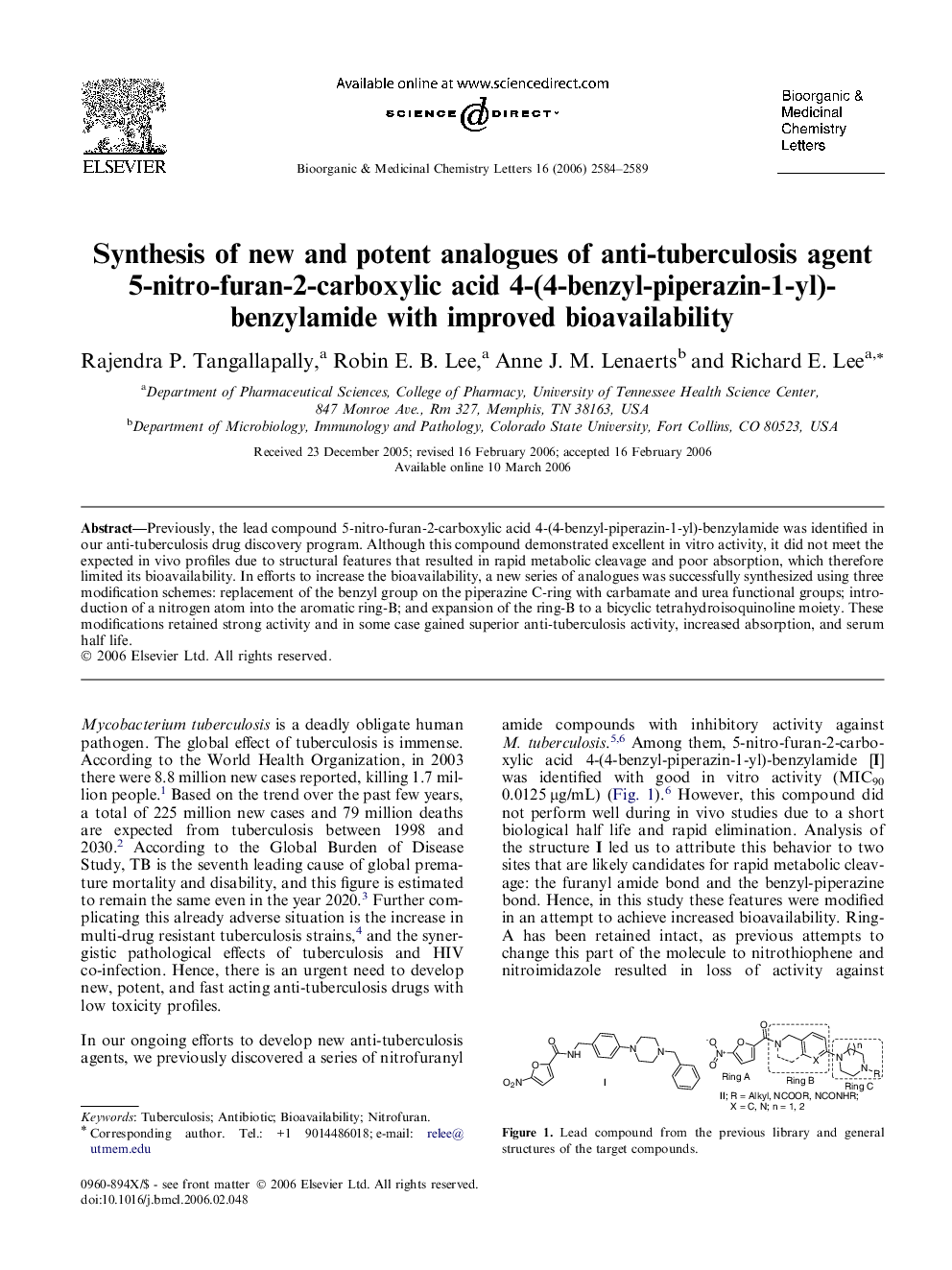| Article ID | Journal | Published Year | Pages | File Type |
|---|---|---|---|---|
| 1378846 | Bioorganic & Medicinal Chemistry Letters | 2006 | 6 Pages |
Previously, the lead compound 5-nitro-furan-2-carboxylic acid 4-(4-benzyl-piperazin-1-yl)-benzylamide was identified in our anti-tuberculosis drug discovery program. Although this compound demonstrated excellent in vitro activity, it did not meet the expected in vivo profiles due to structural features that resulted in rapid metabolic cleavage and poor absorption, which therefore limited its bioavailability. In efforts to increase the bioavailability, a new series of analogues was successfully synthesized using three modification schemes: replacement of the benzyl group on the piperazine C-ring with carbamate and urea functional groups; introduction of a nitrogen atom into the aromatic ring-B; and expansion of the ring-B to a bicyclic tetrahydroisoquinoline moiety. These modifications retained strong activity and in some case gained superior anti-tuberculosis activity, increased absorption, and serum half life.
Graphical abstractThe synthesis of lead optimized analogues, their anti-tuberculosis activity, and bioavailability are reported.Figure optionsDownload full-size imageDownload as PowerPoint slide
